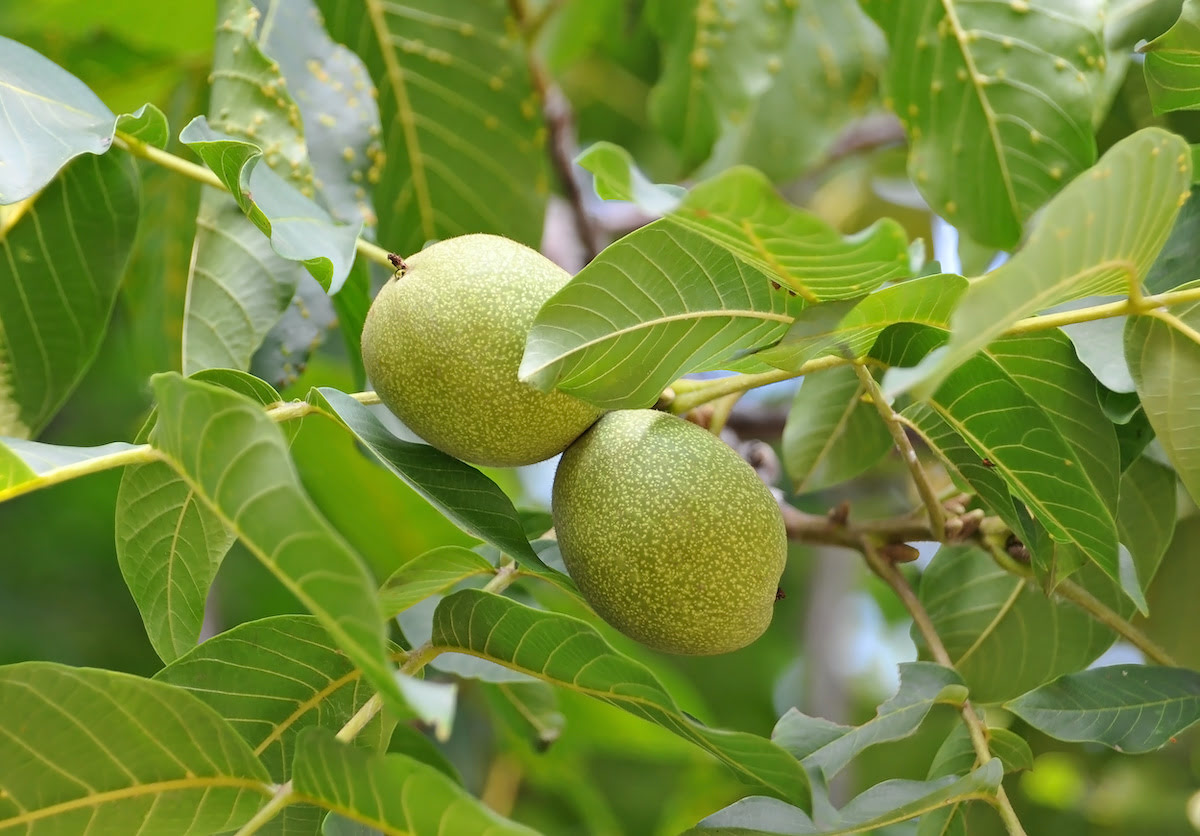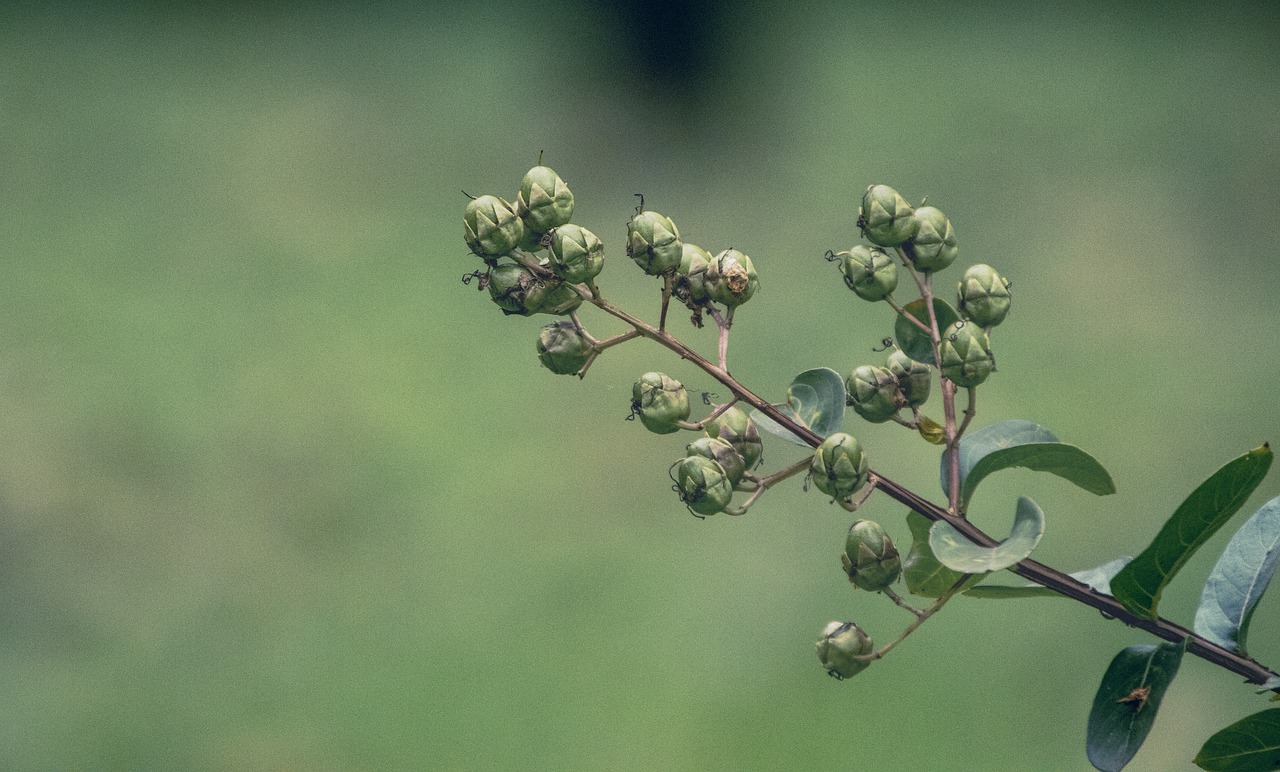Home>Gardening News and Trends>Who Discovered Botany


Gardening News and Trends
Who Discovered Botany
Modified: January 22, 2024
Stay updated with the latest news on who discovered botany and explore the fascinating world of plants.
(Many of the links in this article redirect to a specific reviewed product. Your purchase of these products through affiliate links helps to generate commission for Chicagolandgardening.com, at no extra cost. Learn more)
Table of Contents
Introduction
Botany is the scientific study of plants, encompassing their structure, growth, reproduction, metabolism, and classification. It is a field of science that has been essential to human civilization for thousands of years. Through the study of botany, we have gained a deeper understanding of the natural world and the vital role that plants play in our lives.
The history of botany dates back to ancient times when early civilizations began to observe and document the characteristics of various plant species. From the Egyptians and Babylonians to the Greeks and Romans, these ancient cultures laid the foundation for the study of botany as we know it today.
Over the centuries, botany has undergone significant developments, driven by the curiosity and scientific pursuit of knowledge. The works of groundbreaking botanists like Theophrastus, Carl Linnaeus, and Charles Darwin have revolutionized our understanding of plant life and led to major discoveries.
In this article, we will delve into the fascinating history of botany, exploring its ancient roots, the contributions of early civilizations, and the breakthroughs brought about by notable botanists throughout history. We will also examine the modern era of botany and the remarkable discoveries that continue to shape our understanding of the plant world.
Join us on this journey through time as we uncover the stories and advancements that have shaped the field of botany and provided us with a greater appreciation for the incredible diversity and importance of plants on Earth.
Ancient Roots of Botany
The study of plants can be traced back to ancient civilizations that recognized the significance of plant life for sustenance, medicine, and cultural practices. From the Egyptians to the Babylonians and Chinese, these early civilizations made remarkable contributions to our understanding of plants.
The Egyptians, known for their advanced agricultural practices, were among the first to document the cultivation of various crops and the uses of medicinal plants. The Ebers Papyrus, dating back to around 1550 BCE, contains detailed accounts of hundreds of plants and their therapeutic properties.
In Mesopotamia, the Babylonians developed an impressive knowledge of plants, particularly for agricultural purposes. They conducted experiments to improve crop yields, identified different soil types, and even had a legal code for agriculture. The Code of Hammurabi outlined regulations for crop cultivation, irrigation, and the rights of landowners.
Ancient Chinese civilization also played a significant role in the study of botany. The Shennong Ben Cao Jing, a Chinese herbal text dating back to the 1st century CE, cataloged over 365 medicinal plants and their uses. Chinese herbal medicine is still widely practiced today, highlighting the enduring influence of their botanical knowledge.
Another civilization that contributed to the ancient roots of botany is the Greeks. Theophrastus, often referred to as the “father of botany,” made significant advancements in plant classification and taxonomy. In his landmark work “Enquiry into Plants,” written around 300 BCE, Theophrastus documented over 500 plants and described their various characteristics.
The knowledge of plants in ancient cultures extended beyond practical uses. Plants held symbolic and religious significance for many civilizations. The Egyptians worshiped certain plants as gods, such as the lotus flower, which represented rebirth and creation. In ancient Greece, plants played a role in mythology, with figures like Demeter, the goddess of agriculture, and Dionysus, the god of wine and fertility, associated with specific plants.
The ancient roots of botany laid the foundation for the scientific study of plants. The observations and knowledge accumulated by these early civilizations provided a basis for future botanists to build upon. Their understanding of plant classification, uses, and symbolism paved the way for the advancements that would follow in later eras.
Contributions of Early Civilizations
Early civilizations across the globe played a crucial role in advancing the field of botany through their observational and practical contributions. These ancient cultures developed sophisticated knowledge about plants, their uses, and their impact on society. Let’s explore some of the key contributions made by early civilizations.
The Egyptians, with their advanced understanding of agriculture, developed intricate farming techniques that involved irrigation systems and crop rotation. They cultivated a wide range of crops, including wheat, barley, flax, and various vegetables. The ancient Egyptians also had extensive knowledge of medicinal plants, documented in texts such as the Ebers Papyrus.
In Mesopotamia, the Babylonians excelled in agricultural practices and made remarkable advancements in horticulture. They developed irrigation systems, identified soil types, and experimented with plant breeding to improve crop yields. The Code of Hammurabi, one of the earliest known legal codes, contained regulations for sustainable agriculture and the preservation of land productivity.
Meanwhile, in ancient China, the contributions to botany were equally significant. The Chinese recognized the therapeutic properties of numerous plants and created herbal remedies that are still widely used in traditional Chinese medicine today. The ancient Chinese also developed the practice of cultivating tea, a plant renowned for its medicinal and stimulant properties.
Notably, the ancient Greeks made substantial contributions to the field of botany through the works of renowned scholars like Theophrastus. His book “Enquiry into Plants” documented hundreds of plant species, providing detailed information on their characteristics, classifications, and uses. Theophrastus laid the groundwork for plant taxonomy, facilitating further studies in botany.
Around the same time, the Romans embraced the knowledge of plants and their practical applications. They developed extensive gardens for both medicinal and ornamental purposes, showcasing their appreciation for the beauty and diversity of plant life. Roman scholars like Pliny the Elder compiled vast amounts of botanical information in his work “Naturalis Historia,” which became an essential reference in the field.
These contributions by early civilizations not only advanced our understanding of plants but also left a profound impact on various aspects of human life. Their knowledge of agriculture, medicine, and horticulture laid the foundation for botanical studies and shaped the practices in these fields for centuries to come.
It is through the combined efforts and observations of these ancient civilizations that the study of botany began to take shape, setting the stage for future developments and discoveries in the field.
The Greek Era of Botany
The ancient Greeks made significant strides in the field of botany, laying the foundation for the scientific study of plants that continues to this day. During the Greek era, scholars and philosophers explored the world of plants, conducting observations and experiments, and developing influential theories and classifications. This period witnessed the emergence of prominent botanists who revolutionized our understanding of plant life.
One of the most prominent figures in Greek botany was Theophrastus, often referred to as the “father of botany.” He was a student of Aristotle and made substantial contributions to the field through his work, “Enquiry into Plants.” This extensive treatise cataloged and described over 500 plant species, providing detailed information on their growth habits, reproductive mechanisms, and medicinal properties.
Theophrastus also focused on plant classification, introducing the concept of plant families based on shared characteristics. This groundbreaking work laid the groundwork for the modern system of plant taxonomy, which plays a crucial role in understanding plant relationships and evolution.
Another Greek philosopher, Hippocrates, made significant contributions to the study of medicinal plants. He believed that the human body possessed the innate ability to heal itself and advocated for the use of natural remedies derived from plants. Hippocrates’ teachings laid the groundwork for herbal medicine and influenced medical practices for centuries.
Greek mythology also played a role in shaping the perception of plants. The Greeks associated certain plants with deities and believed in their symbolic and magical properties. For example, myrtle was associated with Aphrodite, the goddess of love and beauty, while laurel was considered sacred to Apollo, the god of sunlight and poetry.
The Greek era of botany also saw the development of botanical gardens, where plants were cultivated for research, education, and aesthetic purposes. The most famous of these gardens was the Garden of Epicurus in Athens, where a diverse range of plants were grown and studied.
Furthermore, Greek philosophers like Empedocles and Democritus speculated about the origins of plants and proposed theories on plant reproduction. Their ideas laid the groundwork for future scientific investigations into plant physiology and reproduction.
The Greek era of botany bridged the gap between ancient knowledge and the scientific approach to studying plants. The works and theories developed during this time set the stage for future botanical advancements and laid the foundation for the systematic exploration of plant life.
The Greek philosophers and scholars demonstrated a keen interest in understanding plants, and their contributions paved the way for the rich botanical heritage that continues to influence our understanding of plants today.
Medieval Developments in Botany
The medieval period was characterized by a blend of ancient traditions and emerging scientific thought, and this period witnessed notable developments in the field of botany. Despite the challenges posed by limited resources and religious restrictions, scholars in the Middle Ages made significant contributions to the understanding of plants and their uses.
During this time, the influence of ancient Greek and Roman botanical knowledge persisted. The writings of early scholars, such as Dioscorides and Pliny the Elder, were widely studied and served as important references for medieval botanists.
Monastic gardens played a pivotal role in preserving and expanding botanical knowledge throughout the medieval period. Monasteries had cultivated gardens where plants were grown for medicinal purposes and experimental studies. Monks were often tasked with cataloging the properties and uses of various plants, leading to the compilation of valuable herbals.
In the 9th century, the Carolingian Renaissance in Europe brought about a renewed interest in learning and exploration. Charlemagne, the Holy Roman Emperor, encouraged the study of classical texts and the establishment of gardens in monasteries to promote the cultivation of medicinal plants. These efforts fueled a revival in botanical studies and laid the groundwork for future developments.
Medieval scholars also advanced the understanding of plant classification. Albertus Magnus, a prominent philosopher and theologian, expanded on the work of Theophrastus and Aristotle, introducing a more systematic approach to plant classification. His work “De Vegetabilibus et Plantis” categorized plants based on their reproductive structures and laid the foundation for further studies in plant taxonomy.
Medieval Europe also had cultural exchanges with Islamic scholars, who made significant contributions to the field of botany. Islamic botanists such as Ibn Sina (Avicenna) and Ibn al-Baitar expanded on Greco-Roman botanical knowledge, providing detailed descriptions of plants and their medicinal properties. Their works were translated into Latin and became influential texts in European botanical studies.
Although medieval botanical knowledge was often intertwined with mystical and symbolic beliefs, it laid the groundwork for future advancements. The rigorous cataloging and identification of medicinal plants paved the way for the development of pharmacopoeias in later centuries.
The medieval period witnessed a fusion of ancient wisdom and emerging scientific thought, resulting in crucial developments in the field of botany. Despite the limitations of the time, scholars and monks played a pivotal role in preserving botanical knowledge and paving the way for future botanical advancements.
The Renaissance and Enlightenment Periods
The Renaissance and Enlightenment periods marked significant milestones in the development of botany, as scholars and explorers expanded their knowledge of the natural world through observation, experimentation, and the sharing of ideas. These periods saw a resurgence of interest in scientific inquiry, leading to groundbreaking discoveries and a more systematic approach to studying plants.
During the Renaissance, there was a rediscovery and translation of ancient texts, including works by Greek and Roman philosophers like Theophrastus and Dioscorides. These texts became sources of inspiration and provided a solid foundation for further botanical investigations.
One of the key figures in Renaissance botany was Leonhart Fuchs, a German physician and botanist. His pivotal work “De Historia Stirpium” was one of the first botanical books to feature detailed and accurate illustrations of plants. Fuchs’ approach of combining visual representation with scientific information greatly influenced later botanical works.
Advancements in botanical illustration were further exemplified by the works of artists like Leonardo da Vinci and Albrecht Dürer, who meticulously rendered plants with anatomical precision and attention to detail. These illustrations not only served as tools for identification but also showcased the beauty and complexity of plant life.
The explorations and expeditions of this period, driven by curiosity and a quest for knowledge, significantly expanded botanical knowledge. The journeys of explorers such as Christopher Columbus, James Cook, and Alexander von Humboldt brought back plant specimens from all corners of the globe, leading to the discovery of new species and the broadening of botanical understanding.
Carolus Linnaeus, a Swedish botanist and zoologist, played a crucial role during this time. His development of the binomial nomenclature system revolutionized plant taxonomy, offering a standardized approach to naming and classifying species. Linnaeus’ work laid the foundation for modern botanical taxonomy, streamlining communication and facilitating a global understanding of plant species.
As the Enlightenment period flourished, new scientific methodologies were embraced. Scientists began to apply experimental methods and analytical thinking to botany. Joseph Priestley’s experiments on plants and their role in oxygen production, for example, contributed to the understanding of photosynthesis.
Additionally, Carl Wilhelm Scheele and Antoine-Laurent de Lavoisier made groundbreaking discoveries in plant chemistry, exploring the composition and metabolic processes of plants. These developments led to the understanding of plant nutrition, respiration, and the role of carbohydrates.
The Renaissance and Enlightenment periods were characterized by a renewed interest in the natural world and a commitment to empirical observation and scientific inquiry. The botanical advancements made during these eras set the stage for the modern scientific understanding of plants and have shaped our knowledge of the plant kingdom to this day.
Modern Botany and Major Discoveries
Modern botany has witnessed numerous groundbreaking discoveries and advancements that have revolutionized our understanding of plants and their role in the natural world. The advent of innovative technologies and interdisciplinary approaches has propelled botany into a new era of scientific exploration and knowledge.
One of the major breakthroughs in modern botany was the unraveling of the genetic code of plants. The discovery of DNA’s structure by James Watson and Francis Crick in 1953 paved the way for understanding the genetic basis of plant growth, development, and evolution. This knowledge has since been leveraged to develop genetically modified crops, improve agricultural practices, and conserve endangered plant species.
The field of phylogenetics, which focuses on determining the evolutionary relationships between species, has undergone remarkable developments. Molecular techniques such as DNA sequencing and phylogenomic analysis have provided deep insights into the evolutionary history and classification of plants. These discoveries have reshaped our understanding of the tree of life and the relationships between different plant groups.
Advancements in imaging technologies, particularly confocal and electron microscopy, have allowed researchers to delve into the intricate structures of plants at the cellular and molecular levels. These techniques have enhanced our understanding of plant anatomy, physiology, and the complex processes that govern growth, reproduction, and adaptation.
The study of plant hormones has also been a major area of focus in modern botany. The hormones, such as auxins, cytokinins, gibberellins, abscisic acid, and ethylene, play vital roles in regulating plant growth, development, and responses to environmental stimuli. Unraveling the functions and mechanisms of these hormones has opened up new avenues for improving crop yield, disease resistance, and stress tolerance.
Biochemical and physiological studies have shed light on the metabolic processes that occur within plants. Researchers have elucidated the pathways involved in photosynthesis, respiration, and secondary metabolite production. This knowledge has not only deepened our understanding of plant biochemistry but also offered insights into the potential applications of plant compounds in medicine, agriculture, and industry.
Ecological research has also been instrumental in modern botany. Scientists study the interactions between plants and their environment, including both abiotic factors like temperature and water availability and biotic factors such as pollinators and herbivores. This research is essential for understanding ecosystem dynamics, conservation efforts, and the impacts of environmental changes on plant communities.
Collaborations between botanists and other scientific disciplines, such as genetics, biochemistry, ecology, and computer science, have led to remarkable discoveries and transformative research. These interdisciplinary approaches have allowed for a more holistic understanding of plants and their complex interactions with the environment.
Modern botany continues to evolve and expand, driven by the curiosity and dedication of researchers worldwide. As technology advances and new scientific frontiers are explored, we are likely to witness even more extraordinary discoveries that will shape our understanding of plants and their fundamental importance in sustaining our planet.
Conclusion
The study of botany has come a long way since its ancient roots, with each era building upon the knowledge and discoveries of the past. From the observations of early civilizations to the groundbreaking research of modern botanists, the field has grown exponentially, unveiling the complexity and beauty of plant life.
Ancient civilizations recognized the importance of plants for sustenance, medicine, and cultural practices. They laid the groundwork for botany through their agricultural knowledge, medicinal plant use, and symbolic associations. The Greek era introduced systematic classification and detailed studies of plants, while the medieval period preserved and expanded upon this knowledge, despite challenges and restrictions.
The Renaissance and Enlightenment periods witnessed an explosion of botanical knowledge, fueled by the rediscovery of ancient texts, explorations, and advancements in illustration, naming systems, and scientific methodologies. It was during this time that the foundation for modern botany was established.
Modern botany has flourished with major discoveries in genetics, phylogenetics, imaging technologies, hormonal regulation, biochemistry, and ecology. Collaborations across disciplines have expanded the frontiers of botanical research, offering deeper insights into the intricate workings of plants and their interactions with the environment.
Botany continues to be of paramount importance today. The study of plants enables us to understand and address pressing global issues such as climate change, ecosystem preservation, and sustainable agriculture. Plants provide us with food, medicine, fuel, and materials, while also playing a crucial role in maintaining ecological balance.
As we delve further into the complexities of botany, it is crucial to foster interdisciplinary collaborations, embrace technological advancements, and promote conservation efforts. By doing so, we can continue to unlock the mysteries of plants, advance human knowledge, and ensure a sustainable future for our planet.
Botany is a journey of exploration and discovery, and it is through our continued fascination and scientific pursuit that we will further unravel the secrets of the plant world and appreciate the vital role that plants play in our lives.







